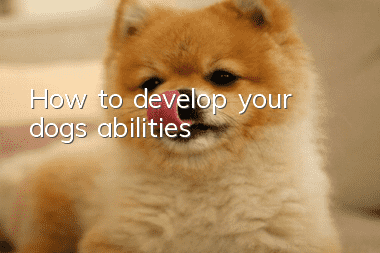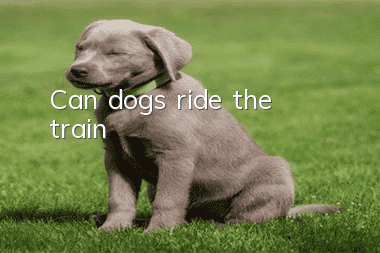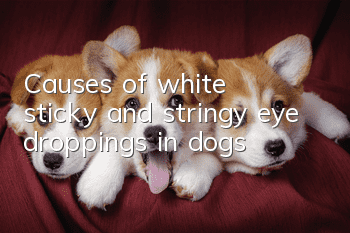How to develop your dog’s abilities

Every complete movement developed by a dog during training is called ability. Each complete ability of a dog is developed through an increasingly complex training process, which is a combination of multiple single conditioned reflexes.
For example: The complete ability of a dog to pick up the bit includes a series of conditioned reflex activities such as going, biting, coming, sitting, and spitting. The development of this ability is the result of the trainer's regular influence on the dog in accordance with the training principles, that is, repeatedly using several fixed and related stimuli to act on the dog's cerebral cortex in sequence, making the dog Several fixed stimuli that appear in sequence form a series of connections. Therefore, as long as the first signal in this connection appears, the dog will show a complete set of conditioned reflex activities. This is the development of ability. During training, dogs must be required to develop a complete set of abilities in related subjects to meet the needs of actual use. However, during the training process, due to the trainer's conscious or unconscious misuse of stimulation, the dog may develop a bond that does not meet the training requirements, which we call "bad bond". For example, when training basic subjects, the dog is always commanded to "sit", "lye", "bark", "come", etc. in a fixed order. As a result, as long as the dog hears the command to sit, it will automatically and continuously make habitual commands. The whole set of actions. If the trainer suddenly changes the order of the passwords, the dog will still habitually make actions that are inconsistent with the passwords. Another example is that when identifying, the trainer places the desired object in a fixed position every time, which will cause the child to develop a habit of not using the sense of smell to identify the object based on its smell, but using vision to identify it based on the location. Bad connections for picking up items. Therefore, during training, we must not only cultivate complete abilities that are meaningful for practical use, but also avoid bad associations with dogs.
2. Principles of ability development
The principle of ability training is: "Step by step, from simple to complex; treat dogs individually according to their conditions."
(1) Step by step, from simple to complex. Step-by-step means cultivating the dog's ability from low to high in stages and steps. Gradual progress does not mean hesitating or slowing down, but it means inheriting the past and building on the future, and moving forward step by step for the camp. Moving from simple to complex is a concrete manifestation of step-by-step. In the process of cultivating each training subject and ability, simplicity is the foundation of traditional skills. To achieve complexity, we must start with simplicity. If dog training violates this principle, it will inevitably lead to a desire to make progress but not to move forward, and a haste rather than speed.
(2) Treat dogs individually according to their conditions. Treating dogs individually according to their conditions is a method to specifically solve the problem of training dogs' abilities based on the contradictory objective laws of individual differences in dogs. Since dogs' nerve types and main reaction characteristics are different, it is necessary to treat each dog differently. The requirements for capacity development and the means of influence cannot be exactly the same. Dogs must be treated separately according to their specific characteristics and using targeted methods. This is an important guarantee for successful training. Carefully understanding and mastering the different types of dogs and the characteristics of their main reactions is the basis for implementing separate treatments. If it is divorced from the reality of the dog, no matter how good the training method is, it will be ineffective.
3. Three stages of ability development
The development of each complete ability of a dog must be trained according to certain procedures. In order to implement training principles specifically in training, we divide the dog's ability development program into three stages:
The first stage: Cultivate the dog to form basic conditioned reflexes for commands and gestures. The dog is required to perform actions based on verbal commands and hand gestures. The following four points should be noted at this stage:
⒈You must choose a quiet environment to prevent external temptations and stimuli from interfering with training.
⒉ The dog’s correct actions should be rewarded in time, but the dog’s wrong actions should also be corrected in a timely and patient manner.
⒊Generally, induction training should be done first, and then lighter mechanical stimulation should be used to force the dog to make movements.
⒋In order to enable the dog to establish conditioned reflexes for voice commands and gestures at the same time, the voice commands and gestures should be used together as much as possible during training.
Second stage:
Complicate the conditions until the development of ability. This stage requires the dog to organically combine independently formed conditioned reflexes to form a complete ability. The following two points should be noted at this stage:
⒈The training environment should not be too complicated, but the training location and environment should be changed frequently.
⒉ The dog’s incorrect movements and delay in executing commands must be corrected in a timely manner, and forced methods must be used appropriately. But when the dog's correct action appears, sufficient rewards must be given in a timely manner.
The third stage:
Exercise in complex environmental conditions. The dog is required to be able to smoothly perform complete movements in the presence of temptation and stimulation to meet the needs of actual use. At this stage, the following two points should be noted: 1. The dog is often taken to complex environments to let the dog adapt to various environments and new stimuli. At the same time, when cultivating the ability to adapt to complex environments, it is necessary to adapt to the dog's conditions to combine easy and difficult training conditions. Carry out practical training for dogs according to the needs of use and the characteristics of various subjects. For example, when conducting identification training, it is not appropriate to complicate the environment. Because during identification, the dog's neural activity needs to be highly concentrated. If the environment is complex, it will affect the accuracy of dog differentiation. Therefore, there are limits to training in complex environments, and futile training must not go beyond the dog's capabilities.
- Things you need to pay attention to when vaccinating your dog
- What causes redness and swelling in the dog’s anus?
- What are the tips for training a puppy to use the toilet? Training a puppy to use the toilet!
- How to train a purebred Shepherd? German Shepherd training tips!
- How to train a Pomeranian to eat randomly? How to teach it to refuse food?
- How to treat urinary tract stones in dogs?
- Why do dogs keep peeing outside when they go out?
- What should I do if my dog vomits due to heatstroke?
- The most basic and practical training: dog defecation at fixed points
- How to get rid of mites on dogs



